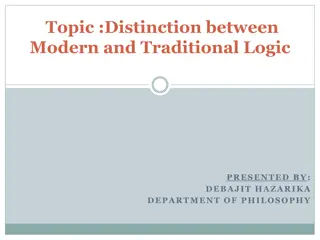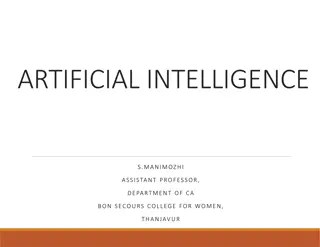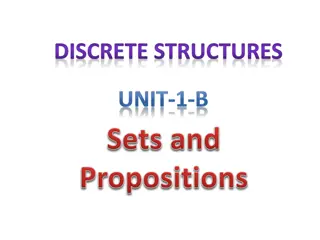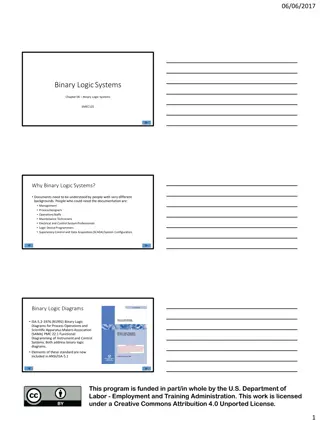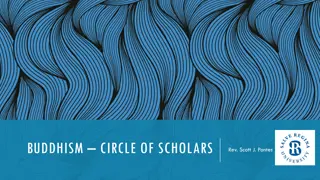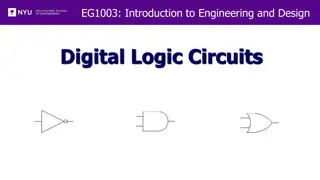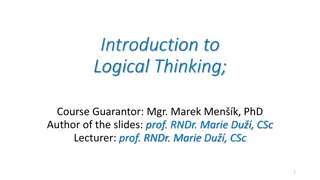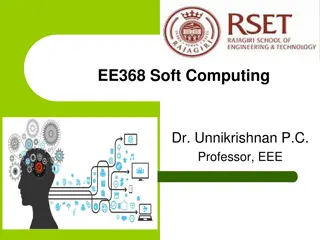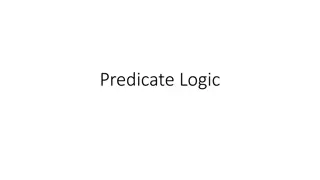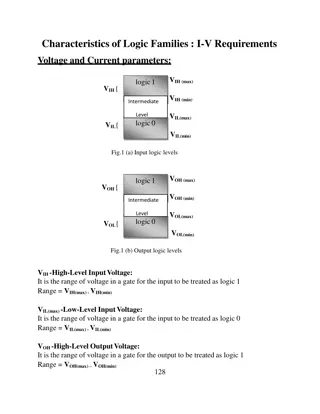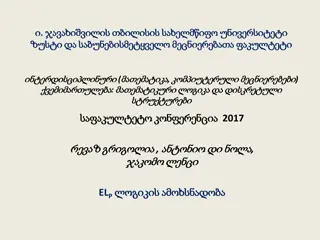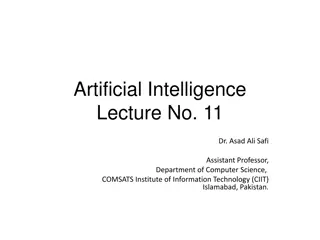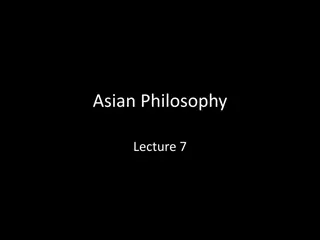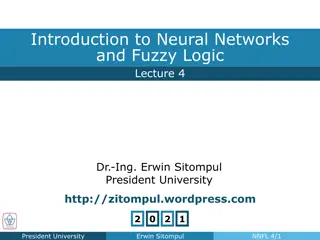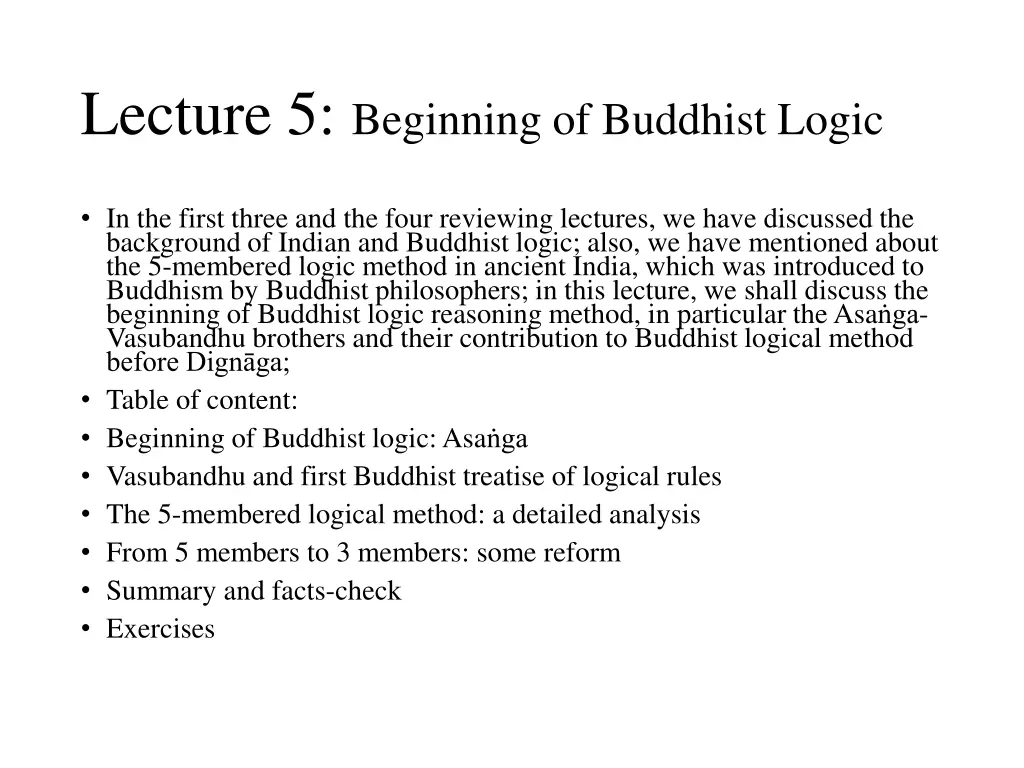
Beginning of Buddhist Logic: Asa.ga and Vasubandhu Brothers
Explore the origins of Buddhist logic through the contributions of Asa.ga and Vasubandhu before Dign.ga, including the introduction of the 5-membered logical method. Learn about the early stages of Buddhist logical tradition and the important philosophers involved, shedding light on the development of systematic logical methods in Buddhist reasoning.
Download Presentation

Please find below an Image/Link to download the presentation.
The content on the website is provided AS IS for your information and personal use only. It may not be sold, licensed, or shared on other websites without obtaining consent from the author. If you encounter any issues during the download, it is possible that the publisher has removed the file from their server.
You are allowed to download the files provided on this website for personal or commercial use, subject to the condition that they are used lawfully. All files are the property of their respective owners.
The content on the website is provided AS IS for your information and personal use only. It may not be sold, licensed, or shared on other websites without obtaining consent from the author.
E N D
Presentation Transcript
Lecture 5: Beginning of Buddhist Logic In the first three and the four reviewing lectures, we have discussed the background of Indian and Buddhist logic; also, we have mentioned about the 5-membered logic method in ancient India, which was introduced to Buddhism by Buddhist philosophers; in this lecture, we shall discuss the beginning of Buddhist logic reasoning method, in particular the Asa ga- Vasubandhu brothers and their contribution to Buddhist logical method before Dign ga; Table of content: Beginning of Buddhist logic: Asa ga Vasubandhu and first Buddhist treatise of logical rules The 5-membered logical method: a detailed analysis From 5 members to 3 members: some reform Summary and facts-check Exercises
Asaga and Buddhist logic Of course, we mentioned that although it is difficult to date the early Buddhist philosophers, it is very likely that N g rjuna lived earlier than Asa ga; however, we do not know how much earlier; We also mentioned that two important treatises composed by N g rjuna should be considered as important works of Buddhist debates; but due to the fact that N g rjuna used the dialectical method of reductio ad absurdum (reduction to absurdity), he did not establish any rules about debate; instead, he only tried to find contradictions in his opponents argument, which would result in its automatic collapse; Asa ga, on the other hand, may well be the first person, as Stcherbatsky suggests, who might have introduced the 5- membered traditional logical method into Buddhist logical reasoning (Stcherbatsky, 1994:29);
Early stage of Buddhist logic: below are three important philosophers of Buddhist logical tradition; but we do not have the sufficient evidence to suggest whether or not one influenced the other, although it would be probably the case that at least the Asa ga-Vasubandhu brothers knew each other s works; Asa ga N g rjuna Vasubandhu
Asaga: the beginning As some of you may still wonder: is there anything we can say about Buddhist logic before Asa ga? This is a difficult question and the answer is we are not so sure; As we said, even during the time of the Buddha, some sort of debates or discursive reasoning can be found; this is particularly true in slightly later Abhidhamma literature; but with logical ideas and in particular more systematic logical method, Asa ga may be viewed as the inception of the mixture of traditional Ny ya logical method and Buddhist logical ideas; At least, from the time of Asa ga, traditional logical method, in particular the 5-membered method started to be mentioned and discussed as a way of logical reasoning in Buddhist philosophical tradition; please read his biography and his logical tract outlined in the lecture notes;
5-membered method: a detailed analysis As mentioned, the 5-membered logical reasoning method was created and used by traditional India logicians and by the time of Asa ga, it was introduced to Buddhist tradition; Basically, at this early stage, those 5 members/terms only roughly formed a system that something can be inferred from something else; for instance: There is a fire in the mountain Thesis, because there some is smoke Reason, and this can be explained by yet another reason: whenever there is a fire, there is some smoke, such as in a kitchen (and unlike in a lake: fire and water are opposite to each other) Examples or Illustrations; With the Thesis being supported by Reason and Examples, the Application and Conclusion are some restatements: there is some smoke so there must be a fire in the mountain;
Further analysis: this logical method below is straightforward, although there might be some unanswered questions; for instance, what are the functions of the last two members? Are they not repetitious? What is the relationship between the reason and the thesis and its relationship with the examples? How can we be so sure the proof is sound and the argument is valid? All those questions shall be discussed when we approach Dign ga and Dharmak rti who asked and answered those, among many other, questions; Thesis: there is fire in the mountain Reason: because of the smoke Example: like in a kitchen, and unlike in a lake Application: there is some smoke Conclusion: there must be a fire in the mountain
Another example: sound and the proof of its impermanent is yet another example that used to demonstrate the 5-membered logical method in Buddhist tradtion; but again, we should consider these questions: what is the relationship between sound, produced-ness and impermanent? Producing a sound and a pot takes a difference process so how this two examples can be compared? Thesis: sound is impermanent Conclusion: sound is impermanent Reason: because it is produced Example: whatever produced is impermanent, like a pot, unlike the sky (not produced) Application: sound is produced
First transition: Vasubandhu It is generally known that Dign ga was a watershed in Buddhist logical method, for before him, the logical method is known as old-hetuvidya or the old method; and after him, it is known as the new-hetuvidya or the new method; we shall say more about this regard in the forthcoming lectures; Here, we need to explain one more issue: as we said, Asa ga, his introduction of Ny ya logical method to Buddhism, and his philosophical tract inaugurated the awareness and acceptance of logical reasoning in Buddhist philosophical tradition; But it was his brother Vasubandhu, who might be the first Buddhist philosopher that made Buddhist logic an independent system; moreover, it might be Vasubandhu who also initiated the first transition in the study of Buddhist logic for the following reasons;
Vasubandhu: logical rules and reform One of the reasons is that before Vasubandhu, the 5-membered logical method was the classical and almost standard structure; and it is generally credited to Dign ga who is said to have simplified the method by expanding the third member/examples while reducing the 4thand 5thmembers altogether; but in his logical treatise V davidhi or Method of Argumentation, the last two members have been already quietly dropped; so at least from this time onward, some sort of reform already took place; (Anacker, 2005:31-32) The second reason is that Vasubandhu composed the first independent logical treatise on logical rules and definitions of those rules; thirdly, the most famous and important Buddhist logician, Dign ga, was in fact a pupil of Vasubandhu; So all those reasons together, Asa ga and Vasubandhu, and in particular the latter, inaugurated a new era for Buddhist logic;
Vasubandhu: generally, it is assumed that in Ngrjunas and Asa ga s logical treatises, the 5-membered method was used; but in Vasubandhu s V davidhi, the 4thand 5thmembers were dropped; this might be the earliest Buddhist reform of traditional logical method; by the time of Dign ga, more changes would occur; 5 members Vasubandhu 2 reductions 3-membered method (Thesis Reason Examples)
From 5 members to 3 members: as mentioned in the previous slides, it was probably Vasubandhu who dropped the last two members, thus reducing the 5 members into 3, although it was Dign ga who explained in more details regarding the necessity of the conciseness and precision of logical terms and structure; Before Vasubandhu After reform 5-members: Thesis Reason Examples (similar and dissimilar examples) 3-members: Thesis Reason Examples: (similar and dissimilar examples) Application Conclusion
5-membered & 3-membered logical reasoning methods: *please notice that Buddhist logic is an ancient philosophical tradition; it is therefore different from biblical tradition which advocates the idea that the world (including sky) is created/produced by God; even in modern theoretical physics, space or sky is understood in different ways compared with the Buddhist view adopted in its logical system; 5-membered 3-membered Thesis: sound is impermanent; Reason: because it is produced; Examples: like a pot, unlike the sky Thesis: sound is impermanent Reason: because it is produced Examples: like a pot, which is produced; and unlike the *sky which is not produced; Application: whatever is produced is impermanent; Conclusion: sound is produced;
Some analysis As you can see, the 5 members in the traditional logical method is quite good; but apparently there are some repetitions; Vasubandhu simply dropped the last two members without bothering to provide some detailed explanations; so let us have a look at the 5-membered logical method first: There is a fire on the mountain Because some smoke can be seen from afar Like in a kitchen (when firewood is burned, fire and smoke appear at the same time), but unlike a lake (where there is water and neither fire nor smoke would exist) If there is fire, there is some smoke There is smoke which can be seen from afar
Possible reasons of dropping the last two members In the above logical method/structure, we have the Thesis, Reason, Example/Illustration, Application and Conclusion; But the 4thmember, or Application, is almost a repetition of the Reason; the 5thmember, then, is also a repetition of the Thesis 1stmember; So in a sense, the last two members are basically redundantly repetitious; But when Dign ga developed Buddhist logical system further, he pointed out that the 5-membered method not only redundant, but also ineffective; we shall discuss this matter in due course; here let us have a look at the 5 members and compare the 5 and 3-membered method;
Below is the comparison: as you can see, the Thesis and the Conclusion are almost identical, while this is also true of the Reason and the Application; First 3 members Last 2 members Thesis: fire on the mountain Conclusion: there is fire on the mountain Application: there is smoke from afar Reason: smoke can be seen Illustration: fire and smoke are concomitant
Summary and facts check-1 In this lecture, we discussed two important philosophers during early stage of Buddhist logical development: the inception of Buddhist logical method which is the work of Asa ga, and the point of departure from 5-membered to 3- membered method which is the work and contribution of his brother Vasubandhu; Also, although N g rjuna produced some early important Buddhist treatises of debate, it was Asa ga who probably for the first time introduced the 5-membered logical system into Buddhist logical tradition, which might well have been inspired his brother Vasubandhu to have compiled the very first and independent philosophical tract V davidhi Method or Argumentation that dealt with logical rules and method;
Facts check-2 Because Vasubandhu s pioneering work on Buddhist logic and because his tutorship, this may in turn have provided the foundation for Dign ga to further organize Buddhist logical method and establish Buddhist logical system; From our discussion, it can be seen that apparently, the last two members of the traditional logical method not only repetitious but also to some extent, unclear; so in his logical treatise, Vasubandhu already dropped the last two members Application and Conclusion; in particular, because Buddhist logical generally provides thesis first and then taking steps to prove it, by the stage of the two examples, the conclusion would be obvious; that may well be yet another reason to drop the two redundant members/terms; That would be all for the lecture; any questions, let me know!
Exercise Do the following exercises and submit them via email (chuanqing@bcs.edu.sg) to me by 5:00 pm, on 30thSeptember (Wednesday); as usual, please send the exercises of the two courses (Buddhism and Economics & Introduction to Buddhist Logic) together in one Word doc. file; 1, Asa ga is an important philosopher in Buddhist logical development. Can you give one reason? 2, Vasubandhu is even more important than his brother in Buddhist logical development. Can you give two reasons?

